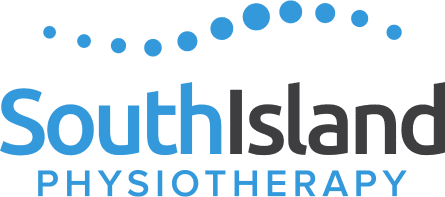The Role of the Pelvic Floor in Postpartum Recovery
The pelvic floor is a network of muscles, ligaments, and connective tissues that support the pelvic organs—including the bladder, uterus, and rectum—and maintain core stability. During pregnancy and childbirth, these muscles undergo significant strain, making postpartum care and pelvic floor rehabilitation critical for long-term health. Understanding the role of the pelvic floor in postpartum recovery allows women to prevent dysfunction, restore strength, and safely return to exercise and daily activities.
Understanding the Pelvic Floor and Its Function
The pelvic floor muscles form a supportive hammock across the bottom of the pelvis. They work in coordination with the abdominal muscles, diaphragm, and spinal stabilizers to maintain continence, support the pelvic organs, and regulate intra-abdominal pressure. The pelvic floor plays a vital role not only in physical function but also in sexual health and quality of life.
During pregnancy, the growing uterus increases pressure on the pelvic floor, while hormonal changes—particularly the effect of relaxin—cause ligamentous laxity. Childbirth, especially vaginal delivery, further challenges these muscles, sometimes leading to trauma, weakness, or overactivity. This can result in pelvic floor dysfunction, urinary or fecal incontinence, and pelvic organ prolapse, where one or more pelvic organs descend toward or beyond the vaginal canal.
Pelvic Floor Dysfunction and Postpartum Challenges
Pelvic floor dysfunction encompasses a spectrum of pelvic floor disorders, including pelvic organ prolapse, incontinence, and sexual dysfunction. Evidence from systematic reviews shows that up to 50% of women may experience some degree of pelvic floor dysfunction postpartum. Risk factors include vaginal delivery, prolonged labor, instrumental births, multiple pregnancies, and pre-existing abdominal weakness, such as diastasis recti.
Pelvic organ prolapse is one of the most common postpartum pelvic floor disorders. Symptoms can include pelvic pressure, vaginal bulging, urinary or fecal incontinence, and discomfort during sexual activity. While pelvic organ prolapse can affect quality of life, structured postpartum care, particularly pelvic floor muscle training, has been shown to improve outcomes and reduce long-term complications.
The Importance of Pelvic Floor Muscle Training
Pelvic floor muscle training (PFMT) is the cornerstone of postpartum rehabilitation. It involves targeted contractions and relaxations of the pelvic floor muscles to restore strength, endurance, and coordination. Evidence consistently demonstrates that structured PFMT can reduce the incidence of urinary incontinence, enhance pelvic floor function, and prevent the progression of pelvic organ prolapse.
Key principles for effective postpartum pelvic floor exercises include:
- Frequency: Daily practice, ideally multiple times per day.
- Progressive loading: Gradually increasing contraction duration and intensity.
- Integration with abdominal muscles: Engaging the deep core, particularly the transverse abdominis, to support pelvic floor function.
- Functional application: Incorporating contractions during daily activities such as lifting, coughing, or exercising.
Pelvic floor physical therapy guidance ensures exercises are performed correctly, which is particularly important in the early postpartum period when muscles may be weak or coordination may be disrupted.
Pelvic Floor Physical Therapy in Postpartum Rehabilitation
Pelvic floor physical therapy is a specialized form of rehabilitation that addresses postpartum pelvic floor dysfunction. Women are often referred to a pelvic floor physical therapist around 6 weeks postpartum, though early intervention may be indicated in cases of perineal trauma, cesarean section recovery, or symptomatic dysfunction.
A comprehensive assessment typically includes:
- Evaluation of pelvic floor muscle strength, endurance, and coordination.
- Examination of abdominal muscles, including assessment for diastasis recti.
- Assessment of posture, pelvic tilt, and functional movement patterns.
- Screening for pelvic organ prolapse or other pelvic floor disorders.
Based on this assessment, a tailored pelvic floor rehabilitation program is developed. Interventions may include:
- Pelvic floor exercises: Targeted training to improve muscle strength and coordination.
- Manual therapy: Techniques to release tension, address scar tissue, and improve tissue mobility.
- Biofeedback: Visual or auditory feedback to enhance awareness and activation of the pelvic floor muscles.
- Education: Guidance on posture, lifting techniques, and strategies to protect the pelvic floor during daily activities.
- Integration with abdominal rehabilitation: Addressing diastasis recti and coordinating pelvic floor and abdominal muscles to restore core stability.
Abdominal Muscles and Postpartum Recovery
The pelvic floor and abdominal muscles function as an integrated system. Weakness in the abdominal muscles, particularly the transverse abdominis, can increase strain on the pelvic floor, exacerbating dysfunction. Diastasis recti—a separation of the rectus abdominis muscles—is common postpartum and can influence pelvic floor performance.
Rehabilitation programs often include exercises that gently engage the abdominal muscles while supporting the pelvic floor. Examples include:
- Supine pelvic tilts
- Gentle core activation exercises
- Coordinated breathing with pelvic floor engagement
Research shows that combining pelvic floor exercises with abdominal muscle training improves recovery outcomes more effectively than pelvic floor exercises alone. This integrated approach helps restore functional core strength, supports pelvic organs, and facilitates safe return to exercise.
Early Postpartum Care and Rehabilitation
The early postpartum period is a critical window for preventing long-term pelvic floor dysfunction. Initiating care soon after childbirth can enhance recovery, prevent pelvic organ prolapse, and improve continence.
Key recommendations for early postpartum care include:
- Pelvic floor physical therapy assessment: Around 6 weeks postpartum, or sooner if complications occurred.
- Structured pelvic floor exercises: Daily contractions progressing from isolated activation to functional integration.
- Abdominal rehabilitation: Gentle engagement of core muscles to support pelvic floor function.
- Education: Guidance on pelvic tilt, posture, bladder and bowel management, and safe lifting techniques.
- Monitoring and prevention: Awareness of symptoms of pelvic organ prolapse or other pelvic floor disorders.
Prevention and Long-Term Management
Preventing pelvic floor disorders begins during pregnancy and continues postpartum. Evidence-based strategies include:
- Prenatal PFMT: Performing pelvic floor exercises during pregnancy reduces postpartum urinary incontinence and supports muscle function.
- Education during childbirth: Awareness of labor positions, pushing techniques, and perineal support.
- Early postpartum rehabilitation: Structured pelvic floor and abdominal exercise programs during the early postpartum period.
- Regular follow-up: Ensuring correct technique, progression of exercises, and monitoring for pelvic floor dysfunction.
For women experiencing pelvic floor disorders or pelvic organ prolapse, pelvic floor rehabilitation provides a non-surgical treatment option that can restore function and reduce symptoms. Pessary devices or other adjunctive therapies may be used in conjunction with targeted exercises for optimal outcomes.
Return to Exercise and Functional Recovery
A common concern among postpartum women is the timing and safety of returning to exercise. Evidence emphasizes a gradual, guided approach to ensure pelvic floor and abdominal muscles are adequately prepared. Early engagement in high-impact or heavy-resistance activities may exacerbate dysfunction if muscles are not yet fully rehabilitated.
Structured pelvic floor rehabilitation programs facilitate safe reintegration into exercise programs. Women who complete postpartum PFMT and abdominal rehabilitation report improved continence, reduced prolapse symptoms, enhanced functional strength, and greater confidence in returning to pre-pregnancy activity levels.
Conclusion
The pelvic floor plays a central role in postpartum recovery. Pregnancy and childbirth can significantly impact pelvic floor muscles and abdominal support, increasing the risk of pelvic floor dysfunction and pelvic organ prolapse. Evidence-based interventions—including pelvic floor muscle training, pelvic floor physical therapy, and abdominal rehabilitation—are essential for early postpartum care, prevention of long-term disorders, and safe return to exercise.
Women are encouraged to seek guidance from qualified pelvic floor physical therapists to develop individualized programs that address their unique postpartum needs. By integrating pelvic floor exercises, abdominal strengthening, and functional rehabilitation, women can optimize recovery, regain strength, and restore confidence in daily life and physical activity.
Through a structured, evidence-based approach, the majority of postpartum pelvic floor disorders can be prevented or effectively managed, supporting long-term health and quality of life for mothers.
If you’re navigating postpartum recovery, prioritizing your pelvic floor health can make all the difference in preventing dysfunction, restoring strength, and regaining confidence in daily life. At South Island Physiotherapy in Victoria, BC, our specialized team of Registered Physical Therapists, Massage Therapists, Kinesiologists, and Chiropractors provides evidence-based pelvic floor rehabilitation tailored to your unique needs. From targeted pelvic floor muscle training to abdominal strengthening and functional movement support, we’re here to guide you every step of the way. Don’t wait to begin your recovery—contact South Island Physiotherapy today and take the first step toward a stronger, healthier postpartum journey.

